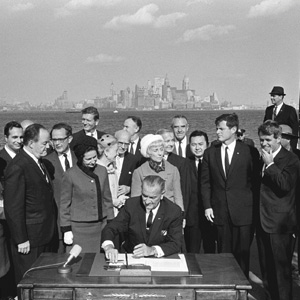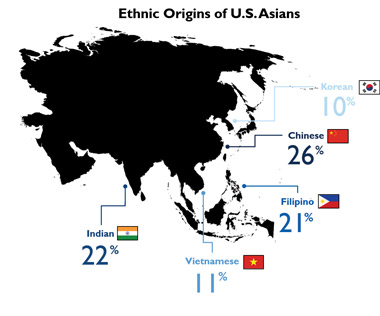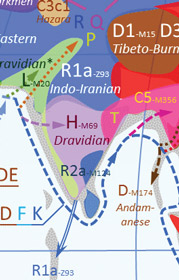Quiz, Immigration Act, Chemistry, Women Scaling Heights, Origins of South Asians, Books
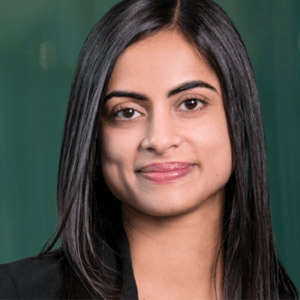
WHO, WHAT, WHERE, WHEN, & WHY
1. Dhivya Suryadevara has been picked by General Motors as its new CFO (chief financial
officer). She grew up in Chennai, and has an MBA from Harvard. Sundar Pichai also grew up in
Chennai, although he went to Stanford for graduate studies. He is the head of which company?
(A) Microsoft (B) Apple (C) Intel (D) Google
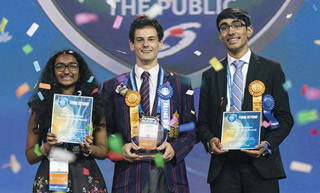
2. The Intel International Science and Engineering Fair had three Grand Award winners. While
the $75,000 Gordon E. Moore Award went to Oliver Nicholls, two Young Scientist Awards went to
Mehgana Bolimpalli of Arkansas and Dhruvik Parikh of Washington. How much is each worth?
(A) $10,000 (B) $25,000 (C) $50,000 (D) $100,000
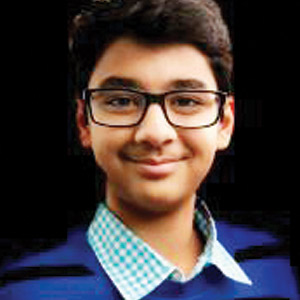
3. Krish Wadhwani of Atlanta is one of the 10 finalists for the 2018 Discovery Education 3M
Young Scientist Challenge (grades 5-8). He hopes to find a cure for Huntington’s disease through an
injectable medication. Gitanjali Rao was how old when she won the contest in 2017?
(A) 11 years (B) 12 years (C) 13 years (D) 14 years
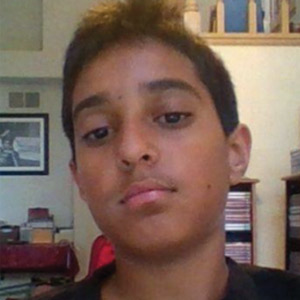
4. Shiva Oswal did it again. Earlier this year, he was the National Academic Quiz Tournament’s
middle school champ. In Atlanta recently, Shiva won the National History Bowl, the National
Science Bee, and the National Academic Bowl. How many players are in his team altogether?
(A) One (B) Two (C) Three (D) Four
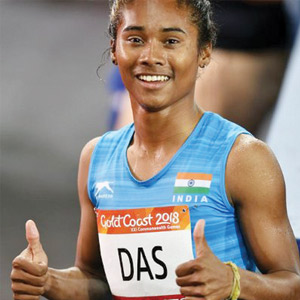
5. When 18-year-old Hima Das, a novice runner and the daughter of a rice farmer, won the
400m race, she became the first Indian to win a gold at a global track-and-field event. The biennial
competition is called the IAAF World U20 Championships. Which nation hasn’t hosted it?
(A) Finland (B) India (C) U.S. (D) Poland
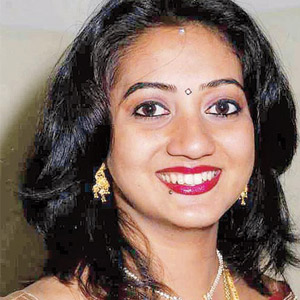
6. Savita Halappanavar was a 31-year-old dentist in 2012 when she had a miscarriage.
Complications, errors, and the nation’s eighth amendment (which banned abortion) led to her
death. It sparked protests, and the amendment was repealed this year. Where did it happen?
(A) Canada (B) Australia (C) New Zealand (D) Ireland
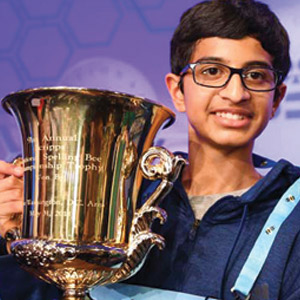
7. Breaking Bee, a well-received film featuring some past winners and prominent Indian-Americans, doesn’t include 14-year-old Karthik Nemmani. He’s the 2018 National Spelling Bee
champ. But the film includes Akash Vukoti, a 2016 national contestant. How old was he?
(A) 6 years (B) 7 years (C) 8 years (D) 9 years
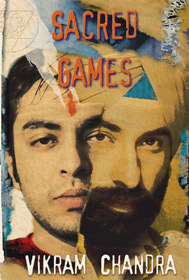
8. Netflix’s first Indian original series, Sacred Games, is an adaptation of Vikram Chandra’s
novel. The eight-part series features Saif Ali Khan, Radhika Apte, and Nawazuddin Siddiqui.
Another Netflix series will be based on which Booker Prize-winning novel by Salman Rushdie?
(A) Shame (B) Midnight’s Children (C) The Satanic Verses (D) The Moor’s Last Sigh
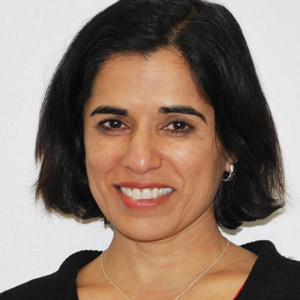
9. Seema Nanda (left), an attorney and activist, has been picked as the new CEO of the Democratic
Party. She becomes the first Asian American to hold that position. Seema Verma, on the other hand,
is a Republican. Verma currently serves as the Administrator of which federal agency?
(A) CDC (B) Medicare & Medicaid (C) FDA (D) EOC
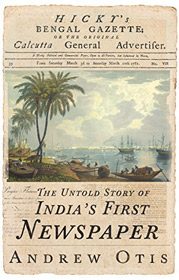
10. Asia’s first newspaper was published in India. Founded by an Irishman, Hicky’s Bengal
Gazette made its debut as a politically engaged English language weekly in 1780. It lasted only two
years. Today, what’s the most widely read English language newspaper in India?
(A) Hindustan Times (B) Deccan Chronicle (C) The Times of India (D) Indian Express
[Answers are at the bottom of this page.]
|
|
|
|
IMMIGRATION ACT: THE FALLOUT
|
|
If Congress in the ’60s could’ve predicted the Immigration and Nationality Act’s profound impact, would they have passed it? It’s a tantalizing thought. Although the so-called Hart-Celler Act was passed in 1965, it became effective only in the summer of 1968. Even the bill’s sponsors couldn’t have guessed how it would transform America in half a century. Indeed, to put it bluntly, this demographic change has been such a shock that no other factor played a bigger role in Donald Trump’s election as the nation’s 45th president, according to a recent study. The tumult we’ve been witnessing over immigration is a clear indication of how crucial it remains to Trump and his supporters. Of course, it is illegal immigration that’s the lightning rod, arousing broad sectors of the population. But we cannot underestimate the importance of legal immigration, which accelerated from non-Western nations after the 1965 Act abolished national quotas.
As the journal PNAS (Proceedings of the National Academy of Sciences of the United States) noted, what drove the support for Trump were “issues that threaten white Americans’ sense of dominant status.” Other studies, such as a survey by the Public Religion Research Institute (PRRI), also found that “fears about immigrants and cultural displacement were more powerful factors than economic concerns” for many Trump voters.
So what’s the change been like? To give an example, in 1960, according to the Migration Policy Institute, there were only 12,000 Indian immigrants in the U.S. Starting in 1980 (when there were 206,000 Indians), the population doubled every decade, reaching 2.04 million in 2013 and 2.4 million in 2015. We’re only counting the legal immigrant population. Indian-Americans now form the third largest immigrant group, surpassed only by Mexicans and Chinese.
Website Bonus Feature
Link:
*For our earlier article on the Immigration Act of 1965, see
http://www.khabar.com/magazine/postcards-from-the-past/legacies-of-the-1965-immigration-act.
O . O . O . O . O . O .
THE MYSTERY OF CHEMISTRY
|
Mas Subramaniam
|
A new blue was discovered accidentally, not unlike other discoveries. At Oregon State University in 2009, when a team led by Mas Subramaniam was researching materials for applications in electronics, they stumbled upon a striking new color. Dubbed YInMn Blue, the pigment is a combination of four elements: yttrium, indium, manganese, and oxygen. Some called it MasBlue. The color is so beautiful that it continues to draw attention. Crayola, in 2017, decided to call it…well, Bluetiful. It’s their latest crayon in an arsenal that has 19 distinct shades of blue. While blue pigments are very unstable, YInMn is stable and nontoxic, making it safe for crayons and paints. The pigment, synthesized at very high temperatures (1200°C), is expected to be widely used. Car manufacturers have taken note, surely.
Rajagopalan Vasudevan, also a chemistry professor, is based in Madurai, India. While plastic gets a bad name for the havoc it causes in the environment, especially our oceans, Vasudevan is not ashamed to be known as the ‘Plastic Man of India.’ That’s because he has found an innovative and economical method to reuse plastic waste, which fuses well with tar at high temperatures. Molten plastic has common properties with bitumen, and they mix well with the gravel used for laying roads. What he calls ‘plastone’ is a block made with plastic and stone. Vasudevan shared his technology with the government, rather than cashing in on it, and he’s been rewarded with the Padma Shri, among other honors.
^ ^ ^ ^ ^ ^ ^ ^ ^ ^
WOMEN SCALING NEW HEIGHTS
|
|
Mt. Everest inspires awe. For outdoor enthusiasts, despite environmental concerns, few achievements can match the grandeur of scaling the world’s tallest mountain. If it’s a big deal for an individual, being one of the youngest or oldest to climb it can make the national news. That’s what happened this year in the case of Shivangi Pathak and Sangeeta Bahl. In May, 16-year-old Shivangi became the youngest Indian female to reach the summit of Everest from the Nepali side. Malavath Purna, the youngest woman to do it from any side, is also from India. Malavath was just shy of 14 when she conquered Everest in 2014. Sangeeta Bahl, a former Miss India finalist, was 53 when she reached the top in May 2018, becoming the oldest Indian woman to climb Everest. And then there’s Deepika Rathore, who ascended Everest not once but twice, most recently in 2016. Now a major in the Indian Army, Rathore was a captain during her first ascent in 2012. As if that wasn’t enough, in 2017, Anshu Jamsenpa became the first Indian woman to accomplish a dual ascent of Everest, which she completed in a span of five days! Again, it was in May, which seems to be an ideal month for climbing in the Himalayas. In 2016, G. R. Radhika became the first Indian female police officer to conquer Everest. In 2013, Nungshi and Tashi Malik became the first female twins to reach the top of Everest, earning them a spot in the Guinness World Records. Finally, we cannot forget Arunima Sinha, an Indian national volleyball player who, after being attacked during a train robbery in 2011, had her leg amputated. But that didn’t stop her. In May 2013, she became the first female amputee to reach the summit of Everest.
1 0 1 0 1 0 1
ORIGINS OF MODERN SOUTH ASIANS
|
|
DNA analysis is all the rage, and South Asians are among the growing number of people signing up for ancestry tests offered by biotech companies like 23andMe. True, the South Asian database is not as robust as the one for people of European descent. But that’s expected to change over time—and meanwhile, South Asians who provided saliva samples for testing are making surprising discoveries about their ancestry. Take Akhilesh Pillalamarri. “Because India has been invaded so many times during recorded history, it would be ridiculous to assume that there is not at least some minor genetic imprint from other parts of the world,” he writes in The Diplomat. “My own genetic history [via 23andMe] shows this: despite being almost 99 percent South Asian over the past 300 years, I have a full-blooded English and a full-blooded ‘Yakut’ [Turkic] ancestor from the 1700s.”
Surprises are also emerging at the macro level. Advances in technology are allowing scientists to analyze ancient DNA, as we saw from a multination study published in Science recently. We now know more about the enigmatic Indus Valley people. Their script remains indecipherable, but based on a study of the ancient DNA of three Indus Valley periphery individuals, researchers have drawn inferences. They seemed to have been a mixture of hunter-gatherers in South Asia and cultivators from ancient Persia. These ancestries, when later combined with the nomadic pastoralists who migrated to India from the steppes of Central Asia, gave rise to modern South Asians. Of course, it’s an evolving story. Much is still unknown because we’re referring to a past that is very distant. Priya Moorjani, a geneticist at UC-Berkeley, points out that the cultivators and hunter-gatherers mixed in the subcontinent between 4700 and 3000 B.C.E.
& & & & & & & & & &
BOOK MATTERS

A Place for Us, the first novel from SJP for Hogarth, is by Fatima Farheen Mirza. SJP are the initials of the actress Sarah Jessica Parker, who, as the new imprint’s editorial director, picks fictional works for publication that reflect her taste. “Ms. Mirza painstakingly details the life of an Indian Muslim family in America and their children’s search to feel whole, fulfilled, and content,” she says. In a novel that draws on the author’s background, Hadia, Huda, and Amar are raised in a conservative Muslim family in California. If every family has a black sheep, here it is Amar, the youngest sibling, who sets the story in motion when he appears at Hadia’s wedding. What caused the estrangement? The story shifts back and forth. Other strands include glimpses of a time when the parents, who grew up in India, were starting out as a young couple. Seems like Mirza, a graduate of the Iowa Writers’ Workshop, has written the ideal page-turner for the dog days of summer.
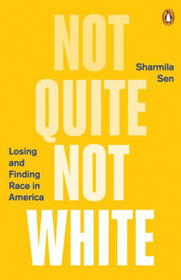
Sharmila Sen’s Not Quite Not White: Losing and Finding Race in America (Penguin) couldn’t be timelier. If slavery is America’s original sin, is race a national obsession? Indians would be familiar with the fault lines of language, religion, caste, and class. But not race. In the U.S., however, this fault line is ever-present—and as Sen points out in her hard-hitting book, “the election of our forty-fifth president cautions us that the postracial world, should we wish to enter it, remains a mirage shimmering on the horizon, redlined and gerrymandered, walled and banned.” A former assistant professor at Harvard, where she focused on developing nations, Sen is executive editor-at-large at Harvard University Press. Moving to the U.S. when she was 12, in the early ’80s, Sen longed to assimilate—which she did. As an adult, she questioned some underlying assumptions about assimilation. If ‘race’ was absent in your life before you became an American, how does it define you afterwards? And how do you assimilate when you’re ‘Not Quite White’?

In The Billionaire Raj (Tim Duggan Books), James Crabtree combines shoe-leather reporting with economic analysis for his fascinating “journey through India’s new gilded age.” Cronyism is as important as capitalism to understand the rise of the aptly named Bollygarchs, whose successes and excesses are so surreal in a country like India that they seem to live on their own planet. Their combined assets are worth $479 billion, and only three nations—the U.S., China, and Russia—have more billionaires. The cover image showing Mukesh Ambani’s home, Antilia, says it all. Crabtree, a former Financial Times correspondent who now teaches at Singapore’s Lee Kuan Yew School, had direct access to the superrich in pre-Modi India, and his widely praised chronicle gives us a ringside view of this tiny but powerful minority. “They displayed ambitions on a scale that no longer seemed possible in the sanitized capitalism of the West,” he writes. “Even the vocabulary used to describe them was dredged up as if from a different era: baron, boss; magnate, mogul; titan, tycoon.”
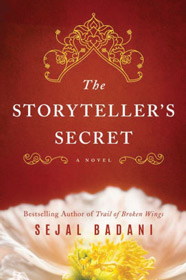
The Storyteller’s Secret, Sejal Badani’s second novel, is from Lake Union Publishing, an Amazon imprint. A former attorney, she found success with her debut novel, Trail of Broken Wings, a Goodreads Fiction Award Finalist. In that book, Sonya is a photographer who tries to reconcile with her family after a tragedy. The new work is also an Indian-American saga—Jaya, the protagonist, is a New York journalist—although this time it is interwoven with another tale set in a different place and time. The novel’s starting point is a traumatic incident. After Jaya’s third miscarriage and the unraveling of her marriage, she goes to India, where a former family servant reveals the secrets of Jaya’s grandmother. In pre-independence India, this pioneering grandmother had experienced love and loss. What’s this story of struggle, courage, and survival that inspires Jaya to seek a new direction in her life?
>>>>>>>>>>>>>>
[Answers to the quiz: 1= (D). 2 = (C). 3= (A). 4 = (A). 5 = (B). 6 = (D). 7 = (A). 8 = (B). 9 = (B). 10 = (C).]
Enjoyed reading Khabar magazine? Subscribe to Khabar and get a full digital copy of this Indian-American community magazine.
blog comments powered by Disqus




